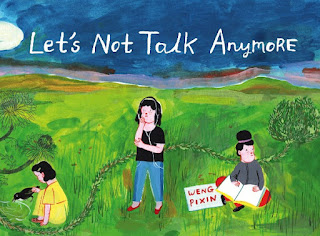Tuesday, September 21, 2021
Run
Thursday, September 9, 2021
Let's Not Talk Anymore
Let's Not Talk Anymore portrays 5 generations of women from the author's family in a graphic memoir. Their stories are told from when they were all fifteen years old. In 1902 the author's great-grandmother Kuan's life is told. In 1947 her grandmother Mei's story is told and in 1972 her mother Bing is portrayed. In 1998 author Pixin’s own life is shown and in 2032 the author's imaginary daughter Rita's life is given. These stories alternate back and forth in time and span a century.
Wednesday, September 8, 2021
Rebecca & Lucie
Rebecca & Lucie in the Case of the Missing Neighbor is a charming murder mystery in comic book format. Amateur sleuth Rebecca Girard is on maternity leave and breastfeeding her baby when she sees two men carrying something heavy into a white minivan. When she finds out that a man from her neighborhood, Eduardo Morales, has gone missing, Rebecca decides to look into the matter. Eduardo had been working as a caregiver to an elderly man in Rebecca's neighborhood and many of her neighbors knew him. Rebecca's investigation is unique. She performs it while juggling to carry her 8 month old baby Lucie everywhere she goes.
Friday, September 3, 2021
Factory Summers
Factory Summers is another great autobiography from cartoonist Guy Delisle. He has written several travelogues from following his wife to Jerusalem, Pyongyang, Shenzen and Burma while she worked with Medecins Sans Frontieres. Here, we have the story of Delisle's four summers as a teenager working for a pulp and paper factory in Quebec City where he grew up.
Wrap-Up of the Graphic Novel and Manga Reading Challenge
The Graphic Novel/ Manga Challenge is a favorite reading challenge of mine. When I signed up I could not pick a level of participation, wave...

-
Tender was published on March 12, 2024. It is a psychological thriller in comic format and is the author's debut graphic novel. The pub...
-
Kate Evans' Red Rosa is a graphic biography of Rosa Luxemburg. I was not familiar with Luxemburg before reading this biography but I fo...
-
Jason Lutes' historical graphic novel Berlin is a masterpiece. It tells the story of the fall of the Weimar Republic and the rise of the...







